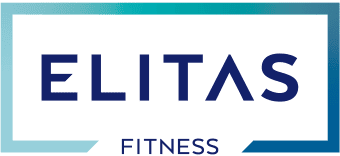Why Elitas Fitness Oaklands is the Best Gym in Chichester Part 1
Welcome to part 1 of a short series of posts I am writing to show you why Elitas Fitness Oaklands is the best membership gym in Chichester. Hopefully by the time you have read this series you will understand fully what this gym is about and why it is the perfect place to train for real results.
The gym is located in Oaklands Park, just to the north of Chichester town centre. The park is a great setting, especially in the summer months, and there is a large free car park. In this first part I will be focusing on the equipment in the gym.
Our gym equipment was all carefully chosen by us to provide everything required for optimal training. We were not looking to maximise profitability of space or entice people in with gimmicks they do not need. As a result, we have everything needed for training for fat loss, muscle and strength gains, rehabilitation and sports performance.
The first thing to notice is our provision for barbell movements. The most bang-for-your-buck exercises are barbell movements – squats, deadlifts, presses, rows etc. These exercises recruit the largest areas of muscle mass and are the easiest to progress with in terms of strength. Although we are a small gym with a strictly capped membership, we have four full power racks. Your average commercial gym will provide one rack (which is probably a half rack, limiting exercise selection, variation and safety) for over 2,000 members. There are no 45 minute waits to be able to squat or bench press here!
We also have calibrated Eleiko bumper plates. This means firstly that our 10kg and 15kg plates are the same large diameter as our 20kg plates, allowing members to safely deadlift with loads lighter than 60kg (a 20kg Olympic barbell with a 20kg plate on each end is the lightest weight that can be set up in most commercial gyms without the bar being too close to the floor). This also means that our plates weigh what they say they weigh. Eleiko plates are the gold standard of weightlifting equipment and are the chosen equipment for the Olympic Games. Cheaper alternatives can be +/-10%! This can cause real problems if you are trying to make small progressive increases to the weights you are lifting over time (as you should be!). Additionally, our plates were used by the All Blacks at a training venue for the recent Rugby World Cup, which is pretty cool!
For shoulder health, athletic performance, physical appearance and posture, upper back training is essential (trapezius, rhomboids etc.). We spend our days slumped over desks: thoracic rounding, scapulae protracted, shoulders internally rotated. To effectively train this area of muscle you need the right equipment. We have a number of adjustable cable stations along with an incredibly wide and versatile range of cable attachments, making it easy to perform exercises such as cable retractions, face pulls, single arm rows, external rotations etc. We also have specific machines dedicated to upper back training: T bar row, seated cable row, lat pulldown.
Probably the most important equipment that the majority of commercial gyms leave out is a range of posterior chain machines. This is because they take up space and require competent coaching to use effectively. Strengthening the posterior chain, specifically the glutes, hamstrings and lower back, is essential for health and longevity as well as athletic performance. If you want to run faster and jump higher, this is the most important group of muscles to target. If you want to prevent or fix injuries and pain then you must learn to use your hips correctly and activate and strengthen these muscles. We have a glute ham raise, a reverse hyper, a 45 degree back extension and a lying leg curl. This range of equipment is only usually found in the most elite strength and conditioning facilities and we are providing it to the public at our gym in Chichester along with all the support and coaching required from our team of expert coaches.
Stay tuned for Part 2 where I will continue to go through the equipment in the gym and how it sets us apart from anywhere else in Chichester and the surrounding area.
If you would like to come in for a chat about training then please contact us on [email protected] or 01243 920536.


